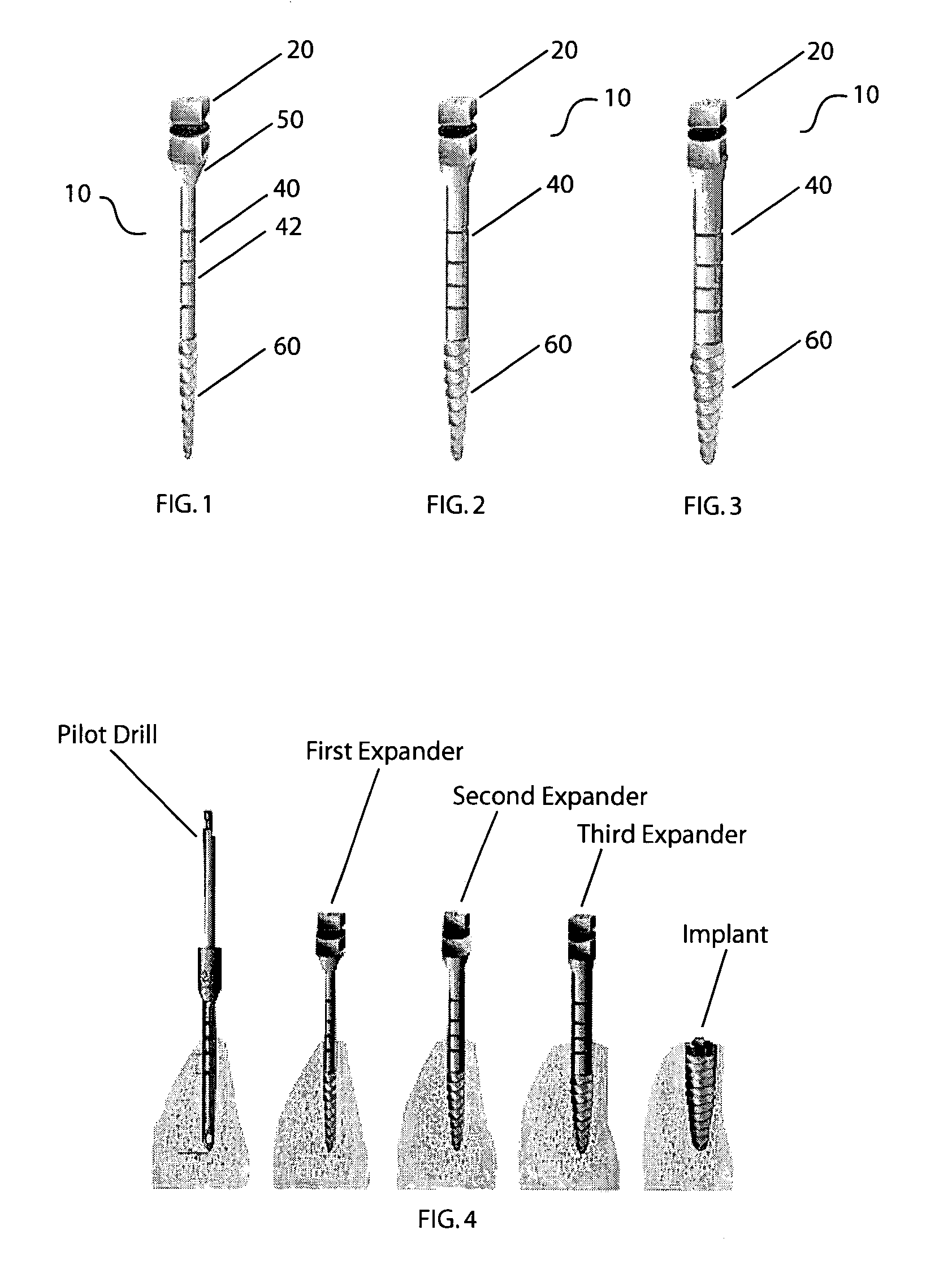Method of bone expansion and compression for receiving a dental implant using threaded expanders
a dental implant and expander technology, applied in dental surgery, dental tools, medical science, etc., can solve the problems of unfavorable drilling for the formation of osseotomy sites in the upper jaw for implant placement, unfavorable implant placement, and often compromised implant placement, so as to achieve optimal engagement with surrounding bone tissue and optimal support
- Summary
- Abstract
- Description
- Claims
- Application Information
AI Technical Summary
Benefits of technology
Problems solved by technology
Method used
Image
Examples
Embodiment Construction
[0020]In one aspect, the present invention provides a set of threaded bone expanders of the same threaded structure, with increasing diameters, for expanding bone, particularly of the narrow ridge, for receiving a dental implant. The threaded expander set can be used in combination with existing ridge expanding / splitting techniques allowing gentle expansion of the osseotomy site. The osseotomy site is an opening in the maxilla or the mandable for placement of a dental implant.
[0021]In one embodiment, as shown in FIG. 1, the threaded expander 10 has an one-piece structure, which comprises a top 20 for engaging with a dental ratchet, a cylindrical shaft 40, a transition 50 between cylindrical shaft 40 and top 20, and a threaded expansion tip 60 connected to cylindrical shaft 40. The expander 10 can be made of stainless steel or other suitable materials used in dentistry.
[0022]The top 20 of the expander 10 is the similar to the hex top in terms of function for engaging with a ratchet. ...
PUM
 Login to View More
Login to View More Abstract
Description
Claims
Application Information
 Login to View More
Login to View More - R&D
- Intellectual Property
- Life Sciences
- Materials
- Tech Scout
- Unparalleled Data Quality
- Higher Quality Content
- 60% Fewer Hallucinations
Browse by: Latest US Patents, China's latest patents, Technical Efficacy Thesaurus, Application Domain, Technology Topic, Popular Technical Reports.
© 2025 PatSnap. All rights reserved.Legal|Privacy policy|Modern Slavery Act Transparency Statement|Sitemap|About US| Contact US: help@patsnap.com


